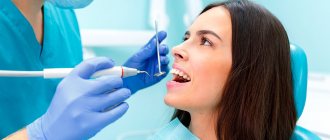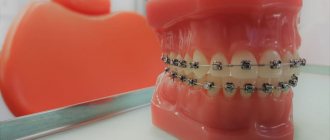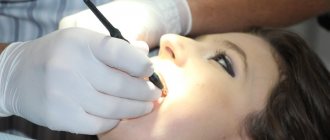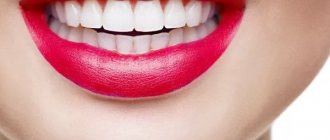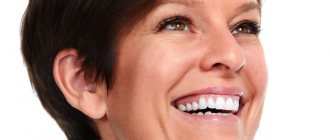You've probably come across the name of a dental service such as professional oral hygiene in an advertisement or on the Internet. And many people reasonably ask: why do you need to do oral hygiene at the dentist, if you can brush your teeth at home with a brush and toothpaste, use rinses and balms that are sold in the store?
The reason is quite simple: even regular and properly brushed teeth at home does not help to completely cleanse the oral cavity of soft plaque; it continues to accumulate and various pathogenic microorganisms actively multiply in it.
Their activities are fraught with the development of caries and inflammation of soft tissues. In addition, plaque can change the color of tooth enamel and teeth look unsightly.
professional oral hygiene procedure in dentistry helps to effectively remove plaque from dental surfaces and from all hard-to-reach places and thereby carry out effective prevention of almost all dental diseases
of dental oral hygiene include what methods are used to carry out the procedure? So that you can have answers to all these questions, we have prepared detailed material on the topic of professional dental and oral hygiene.
Dental and oral hygiene in dentistry: why is it so important to undergo the procedure regularly?
The main task of oral hygiene is to remove hard and soft plaque from the surfaces of the teeth, as well as other areas and areas of the mouth.
Regular and timely removal of dental plaque will be the best prevention of caries and other dental diseases. In addition, oral hygiene in dentistry contributes to:
- Formation of healthy strong teeth;
- Complete destruction of harmful microorganisms that live in large numbers in the human oral cavity;
- Prevention of periodontal and gastrointestinal diseases.
Professional dental and oral hygiene helps keep your teeth enamel in excellent condition - after brushing, your teeth become whiter and your smile looks attractive! Professional oral hygiene is especially recommended for people with bad habits: smokers, patients who abuse strong tea and coffee. The procedure is also indicated for people with poor immunity, because often malfunctions in the body’s immune system are expressed precisely in the appearance of caries and inflammation in the oral cavity.
Regular dental hygiene will ultimately result in significant savings on dental treatment costs.
Which is inevitable if the teeth are not properly cared for and are covered with a thick layer of plaque. So, professional oral hygiene is certainly not a waste of time and money; on the contrary, it is a valuable investment in your own health!
Why do you need to maintain hygiene?
Maintaining hygiene is a good prevention of dental diseases. If you follow the basic rules, you can achieve the following results:
- strong teeth;
- prevention of periodontal disease and caries;
- a snow-white and attractive smile;
- freshness of breath;
- destruction of pathogenic microflora.
Smokers and people with weak immune systems need increased oral care.
If you neglect the rules of care, a person may develop respiratory diseases, heart problems, infectious diseases, problems with the gastrointestinal tract, and bad breath.
Indications and contraindications for professional oral hygiene in dentistry
Like any other medical procedure, dental and oral hygiene has its own indications and contraindications. Indications include:
- The presence of soft or hard plaque on the dental surfaces;
- Inflammatory process affecting the gums;
- Presence of tartar;
- Prevention of the development of caries and other dental diseases;
- Enamel pigmentation as a result of smoking, frequent consumption of tea and coffee.
USEFUL TO KNOW: The dental hygiene procedure also helps to brighten them. After all the activities, the teeth brighten by about one to two shades. This is already a good result, but if you need perfect whiteness, then it is better to use an additional service of modern dentistry after hygiene - professional whitening!
Professional dental and oral hygiene must be performed before prosthetics, implantation, orthodontic treatment using braces, installation of veneers and lumineers.
Also, the professional hygiene procedure can be part of complex therapy in the treatment of diseases such as periodontitis and periodontal disease. It is also recommended for expectant mothers to undergo professional cleaning of their teeth and oral cavity in dentistry: during pregnancy, the risks of caries increase significantly and high-quality oral hygiene will be an excellent prevention of this disease!
However, in some cases it is impossible to maintain oral and dental hygiene. For example, with stomatitis, general infectious diseases of the body in acute form. First, it will be necessary to eliminate these diseases and only then will it be possible to undergo the procedure.
Professional oral hygiene is not recommended in case of severe thinning of the enamel or erosion of the enamel coating of the teeth. Under such circumstances, the procedure can do more harm than good!
Indications and contraindications for professional dental and oral hygiene are determined at a dental appointment: the doctor will conduct an examination and tell you whether in your case it is possible to undergo the procedure immediately or whether preliminary measures will be needed that will improve the quality of hygiene and make it as safe as possible for you!
Innovative new product!
The Swiss company EMS has released a new generation device, Air Flow Prophylaxis Master. He brought professional hygiene to an even higher level: ultrasonic cleaning became available to those with very sensitive enamel and patients with periodontitis. The new device is equipped with a nozzle for removing deposits under the gum - previously this procedure was not included in the standard list of professional hygiene procedures.
HOW OFTEN DO I CLEAN?
• Adults - once every 6-12 months. • Children with mixed dentition - every 3 months. • For those who wear braces - at intervals of 2-4 months. • For older people with dentures - every 4-5 months.
Oral hygiene in dentistry: what is included in the procedure?
In general, oral hygiene in dentistry is a complex event, which includes several procedures at once. Let's consider all these procedures in detail.
Inspection
The patient comes to the dentist, to the doctor’s office, and the specialist conducts a thorough examination of the oral cavity, determining the indications for professional hygiene and eliminating possible restrictions on its implementation. Also during the inspection, a cleaning method is selected. There are several technologies for removing plaque, and we will also tell you about them in a separate section of the article.
Cleaning
To remove hard and soft plaque during dental and oral hygiene, different techniques can be used. Each of them has its own characteristics, pros and cons, which are best familiarized with in advance.
Mechanical cleaning
This method is rarely used in modern dentistry for dental and oral hygiene.
It involves the use of hand-held, outdated instruments that can easily injure the sensitive soft tissues of the oral cavity. The only and very relative advantage of mechanical cleaning is the low price of the service. Photos before and after:
Ultrasound technique
This technology for removing plaque is considered the most modern and safe.
In it, the doctor will use a special installation and instrument - an ultrasonic scaler. This device is capable of creating ultrasonic waves of controlled frequency that destroy not only soft and pigmented plaque on dental surfaces, but also hard tartar. Photos before and after:
Ultrasound is capable of removing plaque not only on dental surfaces, but also in the most inaccessible areas, including periodontal pockets. Such ultrasonic cleaning capabilities are especially in demand when carrying out dental and oral hygiene in patients with periodontitis and periodontal disease.
Air-abrasive technique Air Flow
With this type of teeth and oral cavity cleaning, a special device is used that delivers a powerful water-air jet saturated with small abrasive particles to the dental surfaces.
Air, water and fine abrasive ideally remove soft and pigmented plaque and cleanse the area of periodontal pockets. The Air Flow technique is one of the most modern technologies for dental and oral hygiene; it is painless, does not injure tooth enamel, and has a minimum of contraindications.
Photos before and after:
USEFUL TO KNOW: Most often, Air Flow and ultrasonic cleaning are used in combination, because the first technology perfectly copes with soft and pigmented plaque, but is practically useless against old tartar.
Another cleaning technology used in modern dentistry is the laser technique. It uses a directed laser beam, which not only destroys plaque, but also destroys all pathogenic microflora in the oral cavity. The laser cleaning procedure is safe, it does not harm tooth enamel, and does not cause increased sensitivity of teeth and gums. In addition, laser cleaning promotes accelerated healing of various microcracks and wounds present in the oral cavity.
What cleaning method will be used in your case? You will decide this issue together with your doctor, because each method of cleaning dental surfaces during dental and oral hygiene has not only indications, but also contraindications.
But cleaning dental surfaces is far from the final stage of professional dental and oral hygiene procedures. After removing plaque, you will need to carry out the stages of polishing and grinding the surface of the teeth and remineralizing the tooth enamel.
Polishing
Polishing of dental surfaces is a mandatory step in dental and oral hygiene in dentistry.
High-quality polishing of teeth gives them a beautiful shine and perfect smoothness, thanks to which plaque does not accumulate on the enamel. The polishing stage is carried out during dental and oral hygiene with a specialized instrument.
Remineralization
Remineralization is a procedure that represents the final stage of dental and oral hygiene.
During this stage, the specialist treats the surfaces of the patient’s teeth with preparations containing fluoride and calcium. This treatment prevents the occurrence of unpleasant hypersensitivity of teeth, acts as an excellent prevention of caries, and in addition helps to strengthen and restore tooth enamel. Oral and dental hygiene ends with a detailed consultation with a doctor. The dentist explains in detail to the patient what dental care should be like after the procedure, and assists in choosing products and tools for everyday dental hygiene.
Removing smoker's plaque on teeth
The densest and most persistent is the smoker's plaque, because it consists of the tars contained in the cigarette. A person cannot remove such plaque on his own, and he often does not even suspect how bad his teeth look from the inside.
This plaque can be removed using professional cleaning technologies in our clinic:
- An abrasive method, when particles of sand, along with water and air, are applied to the surface of the tooth. This is the most effective and fastest way.
- A chemical method in which harmful plaque is dissolved after the application of certain drugs.
- The standard cleaning method is using special cleaning rotating attachments on the drill.
After the cleaning procedure, the tooth surface is polished. This allows you to protect your teeth from further plaque sticking to them for a long time.
Is it painful to undergo oral and dental hygiene at the dentist?
Many people are afraid to visit the dentist and experience strong negative emotions even before undergoing such simple procedures as dental and oral hygiene. In this case, there is no need to be afraid: ultrasonic cleaning, polishing and remineralization - all these activities do not cause pain!
However, if you have increased tooth sensitivity, deep periodontal pockets will have to be cleaned - local anesthesia can be given, which completely removes all painful and unpleasant sensations during dental and oral hygiene.
And our dental clinic in Moscow - “Firadent” is ready to offer you two innovative services - dental and oral hygiene under sedation, that is, in a dream, as well as teeth cleaning under a microscope!
How is the cleaning done?
Previously, dental plaque was removed manually using mechanical instruments, but this was uncomfortable for the patient and harmful to the enamel.
Today, hygienists use ultrasound and Air Flow devices.
- Tartar is removed using an ultrasonic scaler.
- An abrasive solution under high pressure removes soft bacterial plaque, traces of coffee, nicotine, and food coloring.
- Tooth enamel is polished and fluoridated to strengthen it.
BEFORE WHAT TREATMENT SHOULD YOU CLEANSE?
• Implantation • Prosthetics • Installation of braces • Installation of veneers • Whitening • Dental treatment (in some cases)
How to care for your teeth and oral cavity after a professional dental hygiene procedure?
Of course, you should also carry out dental and oral hygiene at home. Your doctor will tell you in detail how to do this correctly; he will also help you choose the right care products: paste, brush, and may recommend the use of additional tools - dental floss, brushes, irrigators.
General rules for dental and oral hygiene at home will be as follows:
1. Choose brushes of the correct degree of hardness for brushing your teeth and, best of all, with synthetic bristles;
2. To maintain high-quality oral hygiene, it will be useful to change the brush at least once every three months;
3. Teeth need to be brushed twice a day: in the morning and immediately before bed;
4. During oral hygiene procedures, it is imperative to brush not only your teeth, but also your gums and tongue. These measures will prevent the active accumulation of plaque and act as an excellent prophylaxis against periodontal diseases;
5. Don’t forget that you need to clean not only the surfaces of your teeth on both sides, but also the spaces between your teeth. To do this, it is recommended to use dental floss or special brushes.
Home oral and dental hygiene is not enough to completely remove plaque and tartar and monitor the appearance of caries, and therefore you need to visit the dentist 1-2 times a year and undergo a professional examination!
Features of hygiene procedures
To clean your teeth, you should purchase special products and adhere to certain rules for the procedure.
To do this you will need:
- toothbrush and toothpaste;
- brushes to remove food debris stuck in the interdental space;
- rinse aid
When choosing a toothbrush, you should consider the degree of stiffness of the bristles. If you can’t use a toothbrush, then you should also have dental floss. To get rid of the unpleasant odor, you need to have sugar-free chewing gum with you.
Price for professional dental and oral hygiene in dentistry
To find out the exact price of professional dental and oral hygiene services, you will need to come to the clinic and undergo an examination by a dentist. This is important because the type of teeth cleaning will be determined based on your individual characteristics. Perhaps you have contraindications for some type of cleaning, or in your case a certain technology will work optimally.
If you want to find out the maximum useful details not only about the cost of a professional oral hygiene procedure, but also about the stages of its implementation, the doctors of our dentistry in Moscow “Firadent” will be happy to help you!
You can get a detailed free consultation from our specialists at any time convenient for you: just contact us by phone number and make an appointment!
"Firadent" - we will help make your teeth healthy and your smile bright and attractive!
What happens if you don't maintain hygiene?
If you neglect the process of oral hygiene care, it can ultimately lead to many unpleasant consequences. Among them:
- Caries;
- Gingivitis (gum inflammation);
- Candidiasis (infection caused by bacteria of the genus Candida. Manifests itself in the form of a yellowish and grayish coating);
- Periodontitis. This is an inflammatory disease of the gums, characterized by tissue atrophy;
- Stomatitis (inflammation of the oral mucosa).
Free webinars on anti-aging medicine Learn about the features of the Anti-Age Expert International School, as well as the opportunities for improving your medical practice every day. The webinar program also includes fascinating reviews of innovations in anti-aging medicine and analyzes of the most complex clinical cases with recommendations that really work
Find out more


